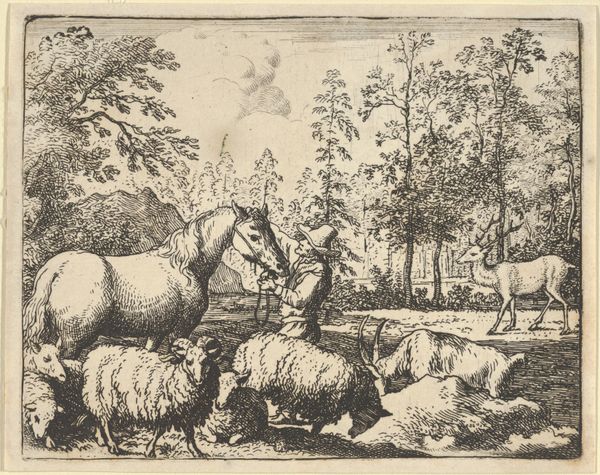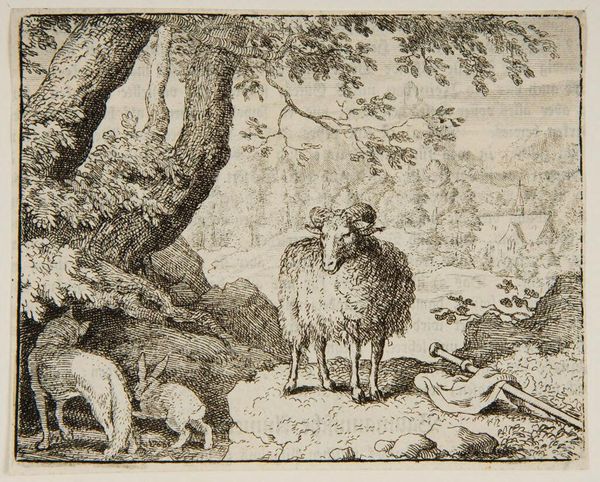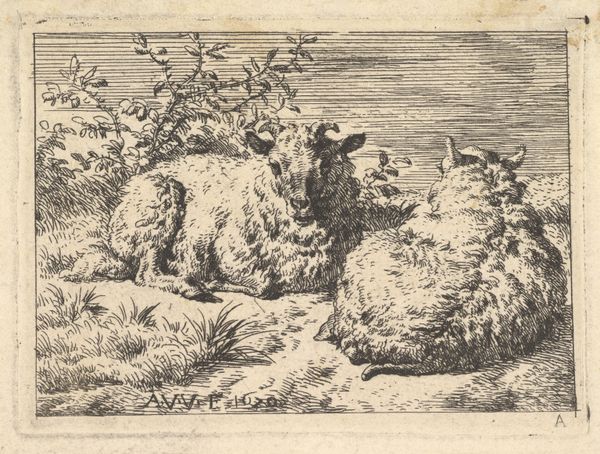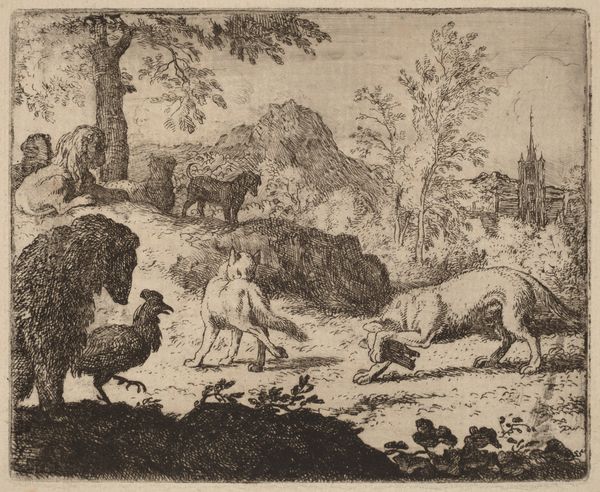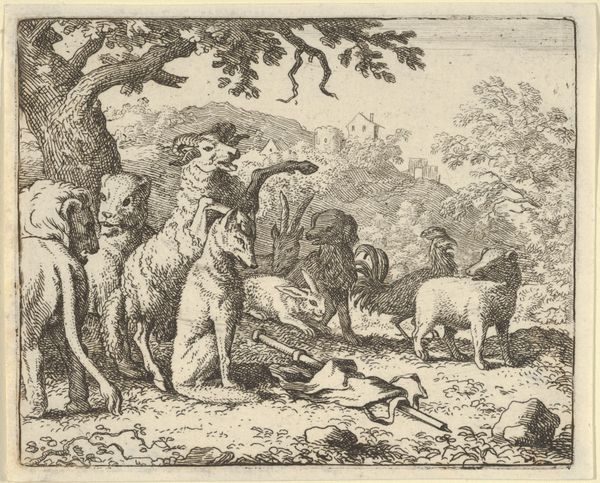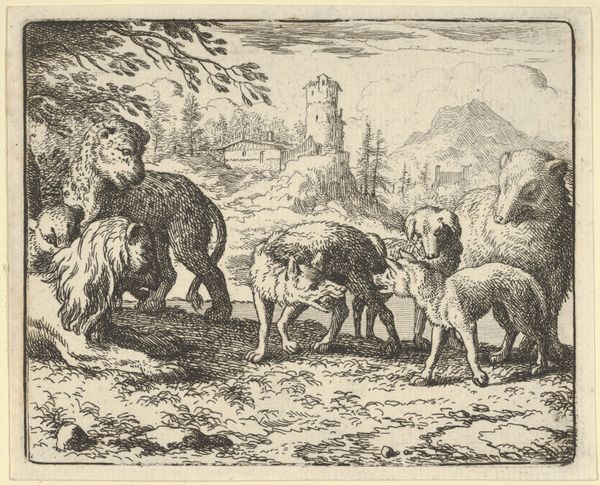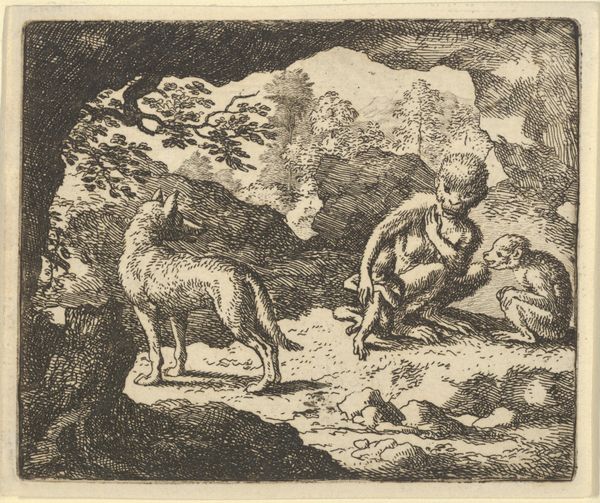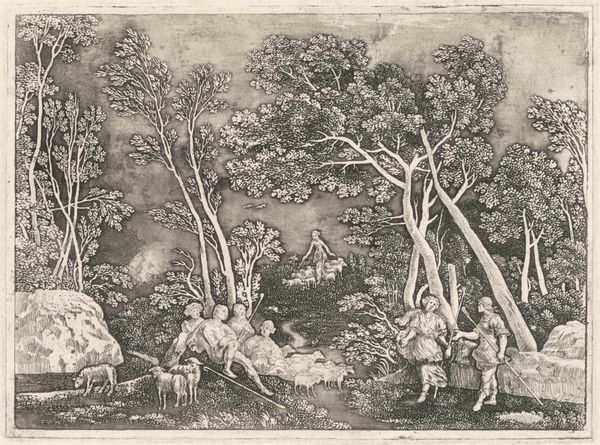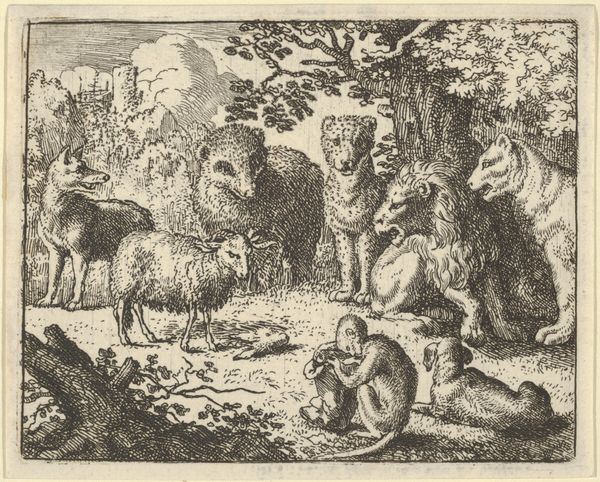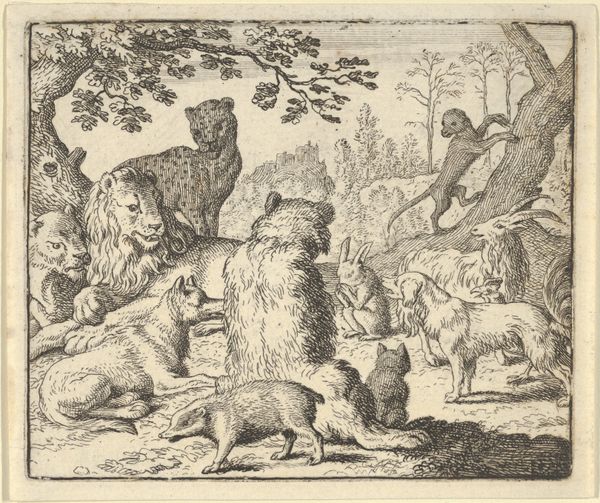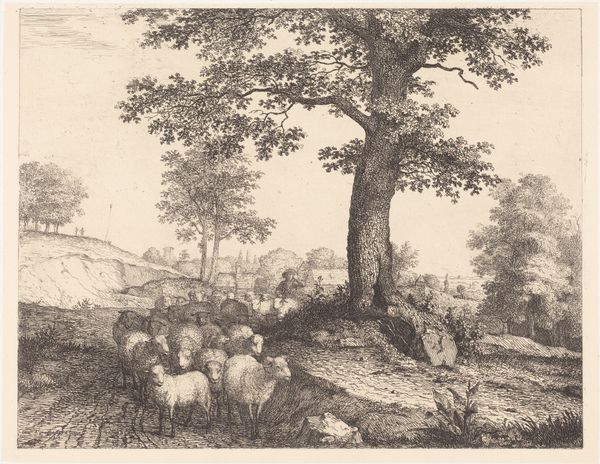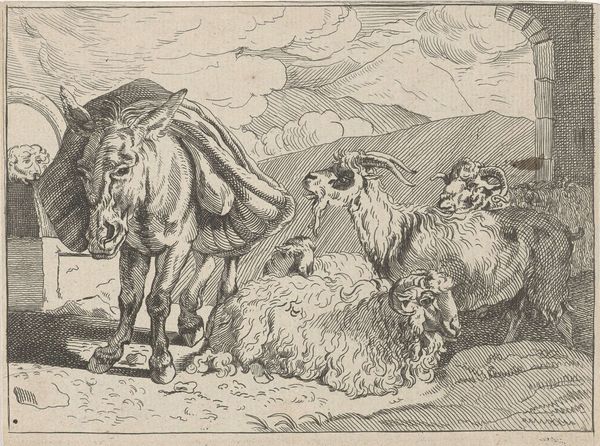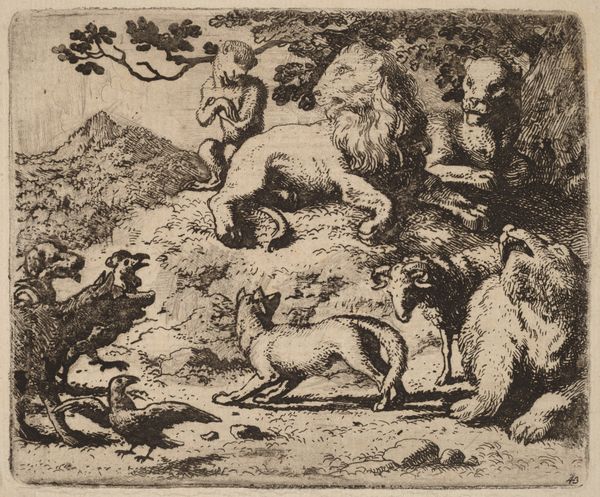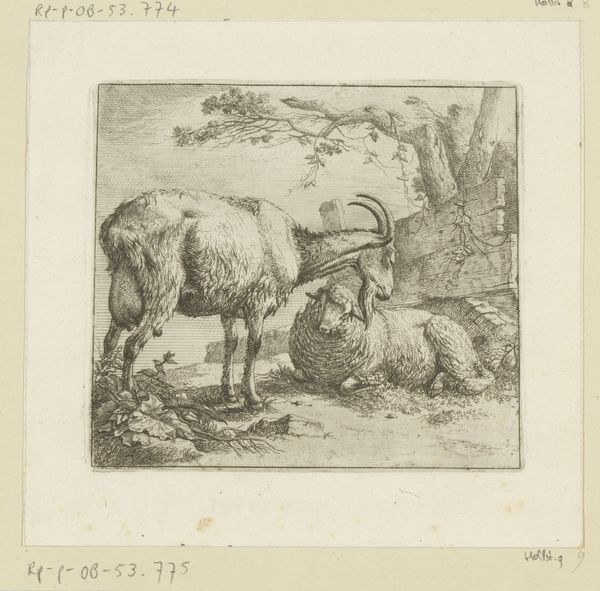
Reynard Returns Home, Accompanied by the Ram and the Rabbit c. 1645 - 1656
0:00
0:00
print, etching
#
dutch-golden-age
# print
#
etching
#
landscape
#
figuration
Copyright: National Gallery of Art: CC0 1.0
Editor: This etching, "Reynard Returns Home, Accompanied by the Ram and the Rabbit," created by Allart van Everdingen around 1645-1656, possesses this strangely calm, almost fable-like atmosphere despite featuring a fox. What layers am I missing? How do you interpret this work? Curator: Beyond its narrative surface, rooted in the popular medieval stories of Reynard the Fox, I see a potent commentary on social hierarchies and power dynamics within 17th-century Dutch society. Van Everdingen, through the etching technique, subtly highlights the deception and cunning often employed by those in positions of privilege. Look at how Reynard is half-hidden, almost slinking, even in his 'triumphant' return. Editor: That’s a fascinating way to look at it! So you're saying that it's more than just an illustration of a folk tale. The artist uses these familiar archetypes – the trickster fox, the naive ram, the timid rabbit – to comment on inequalities. Curator: Precisely! And the landscape itself plays a role. The dense, somewhat oppressive forest setting could represent the constraints and challenges faced by those lower down the social ladder, manipulated by figures like Reynard. Van Everdingen perhaps questions the assumed moral authority, using folklore as a critical lens. Consider also the historical context; were there specific social or political anxieties feeding into such interpretations? Editor: So, by examining both the visual details and the social background, we can see how "Reynard Returns Home" resonates far beyond a simple animal story. Curator: Absolutely. It's in these nuances that the true power of art lies – its ability to reflect and critique the world around us, even centuries later. And these readings continue to evolve, intersecting with our present. What relevance might such a tale have for us today, in terms of class or other power structures? Editor: This has really opened my eyes to a richer interpretation, I will never look at fables the same way! Thanks.
Comments
No comments
Be the first to comment and join the conversation on the ultimate creative platform.
